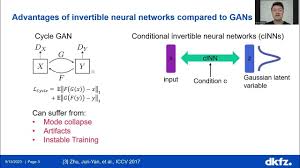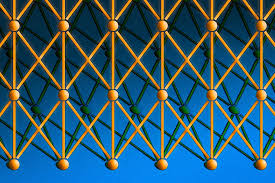Understanding Conditional Neural Networks
In the rapidly evolving field of artificial intelligence and machine learning, neural networks have become a cornerstone technology for tasks ranging from image recognition to natural language processing. Among the various types of neural networks, Conditional Neural Networks (CNNs) are gaining attention for their ability to improve efficiency and performance in certain applications.
What are Conditional Neural Networks?
Conditional Neural Networks are a type of neural network that dynamically adjusts its structure or parameters based on certain conditions or inputs. Unlike traditional neural networks that follow a fixed architecture during inference, CNNs can alter their behavior depending on the input data or specific conditions defined by the user.
This adaptability allows CNNs to be more efficient, as they can focus computational resources on relevant parts of the network only when necessary. This can lead to faster processing times and reduced energy consumption, making them particularly useful in resource-constrained environments such as mobile devices.
How Do Conditional Neural Networks Work?
The core idea behind CNNs is to use conditional computation to selectively activate parts of the network. This is typically achieved through mechanisms such as gating functions or attention mechanisms that decide which neurons or layers should be active for a given input.
- Gating Functions: These functions act like switches that turn certain parts of the network on or off based on input conditions. They help in reducing unnecessary computations by activating only those neurons that contribute significantly to the task at hand.
- Attention Mechanisms: By focusing computational resources on relevant areas of input data, attention mechanisms allow CNNs to process information more effectively without wasting resources on irrelevant details.
Applications of Conditional Neural Networks
CNNs are particularly beneficial in scenarios where computational efficiency is crucial. Some common applications include:
- Image Processing: By using conditional computation, CNNs can focus on important regions within an image, improving both speed and accuracy.
- NLP Tasks: In natural language processing, CNNs can dynamically adjust their structure based on context, leading to better understanding and generation of text.
- IOT Devices: With limited processing power available in IoT devices, CNNs offer a way to perform complex tasks without exceeding resource constraints.
The Future of Conditional Neural Networks
The development and refinement of Conditional Neural Networks represent an exciting frontier in machine learning research. As AI systems continue to integrate into everyday life, the need for efficient and adaptable models will only grow. Researchers are actively exploring new techniques for enhancing conditional computation capabilities within these networks.
The future may see widespread adoption of CNNs across various industries as they provide practical solutions for balancing performance with resource efficiency. As advancements continue, it will be fascinating to see how these networks evolve and contribute further to technological progress.
Conclusion
Conditional Neural Networks offer a promising approach towards creating more efficient AI systems by adapting their computations based on specific inputs or conditions. Their ability to optimize resource usage while maintaining high performance makes them an attractive choice for numerous applications across diverse fields.
If you’re interested in harnessing cutting-edge technology that adapts intelligently according to your needs—whether it’s improving image recognition accuracy or enhancing natural language understanding—consider exploring what Conditional Neural Networks have to offer!
8 Essential Tips for Mastering Conditional Neural Networks
- Understand the concept of conditional neural networks before implementation.
- Clearly define the conditions under which different parts of the network should be activated.
- Ensure that your dataset includes sufficient examples for each condition you want the network to learn.
- Regularize your model to prevent overfitting, especially when dealing with conditional data.
- Consider using techniques like attention mechanisms to improve the network’s focus on relevant conditions.
- Experiment with different architectures to find the most suitable one for your conditional neural network.
- Monitor and analyze the performance of your network based on different conditions to identify areas of improvement.
- Stay updated with research advancements in conditional neural networks for potential enhancements.
Understand the concept of conditional neural networks before implementation.
Before diving into the implementation of conditional neural networks, it is crucial to first grasp the concept behind them. Understanding how conditional neural networks dynamically adjust their structure or parameters based on specific conditions or inputs is essential for effectively leveraging their capabilities. By gaining insight into how these networks adapt and optimize their computations according to varying circumstances, you can make informed decisions during the implementation process, leading to more efficient and successful utilization of this advanced technology.
Clearly define the conditions under which different parts of the network should be activated.
To maximize the efficiency and performance of a Conditional Neural Network, it is crucial to clearly define the conditions under which different parts of the network should be activated. By establishing specific criteria or rules for activating certain neurons or layers based on input data or contextual cues, the network can adapt dynamically to focus its computational resources where they are most needed. This precise definition of activation conditions enables the network to operate more effectively, processing information selectively and optimizing its performance for various tasks.
Ensure that your dataset includes sufficient examples for each condition you want the network to learn.
To maximize the effectiveness of your Conditional Neural Network, it is crucial to ensure that your dataset contains an ample number of examples for each condition you intend the network to learn. Providing sufficient training data for each specific condition allows the network to accurately capture the nuances and variations associated with different scenarios, leading to improved performance and robustness in handling diverse inputs. By curating a well-balanced dataset with adequate representation of all conditions, you can enhance the network’s ability to generalize and make informed decisions based on varying input conditions effectively.
Regularize your model to prevent overfitting, especially when dealing with conditional data.
When working with conditional neural networks, it is crucial to regularize your model to prevent overfitting, especially when dealing with conditional data. Overfitting occurs when a model learns noise and irrelevant patterns from the training data, leading to poor generalization on unseen data. By applying regularization techniques such as dropout or L2 regularization, you can help the model generalize better and avoid memorizing specific conditional instances. This ensures that the model focuses on learning meaningful patterns and relationships within the data, improving its performance and robustness in real-world applications.
Consider using techniques like attention mechanisms to improve the network’s focus on relevant conditions.
When implementing a Conditional Neural Network, it is advisable to incorporate advanced techniques such as attention mechanisms to enhance the network’s ability to concentrate on pertinent conditions. By leveraging attention mechanisms, the network can dynamically adjust its focus, allocating computational resources more effectively to relevant input data. This approach not only improves the network’s performance but also optimizes its efficiency by prioritizing essential information, ultimately leading to more accurate and streamlined outcomes.
Experiment with different architectures to find the most suitable one for your conditional neural network.
To optimize the performance of your conditional neural network, it is essential to experiment with various architectures to identify the most suitable one. By exploring different structures and configurations, you can fine-tune your network to effectively adapt to specific conditions or inputs, enhancing its efficiency and accuracy. This iterative process of testing and refining architectures will enable you to tailor your conditional neural network to meet the unique requirements of your application, ultimately leading to improved results and better overall performance.
Monitor and analyze the performance of your network based on different conditions to identify areas of improvement.
To optimize the efficiency and effectiveness of your Conditional Neural Network, it is essential to monitor and analyze its performance under various conditions. By evaluating how the network behaves in different scenarios, you can pinpoint areas that may require improvement or refinement. This proactive approach allows you to fine-tune the network’s structure and parameters, enhancing its overall performance and adaptability to meet the specific requirements of your tasks or applications. Regular performance analysis based on diverse conditions is key to unlocking the full potential of your Conditional Neural Network and achieving optimal results.
Stay updated with research advancements in conditional neural networks for potential enhancements.
To maximize the benefits of conditional neural networks, it is essential to stay informed about the latest research advancements in this field. By keeping up-to-date with new developments and breakthroughs in conditional neural networks, you can discover potential enhancements and innovative techniques that could significantly improve the efficiency and performance of your neural network models. Continuous learning and exploration of emerging trends will empower you to leverage the full potential of conditional neural networks and stay at the forefront of this rapidly evolving technology landscape.




